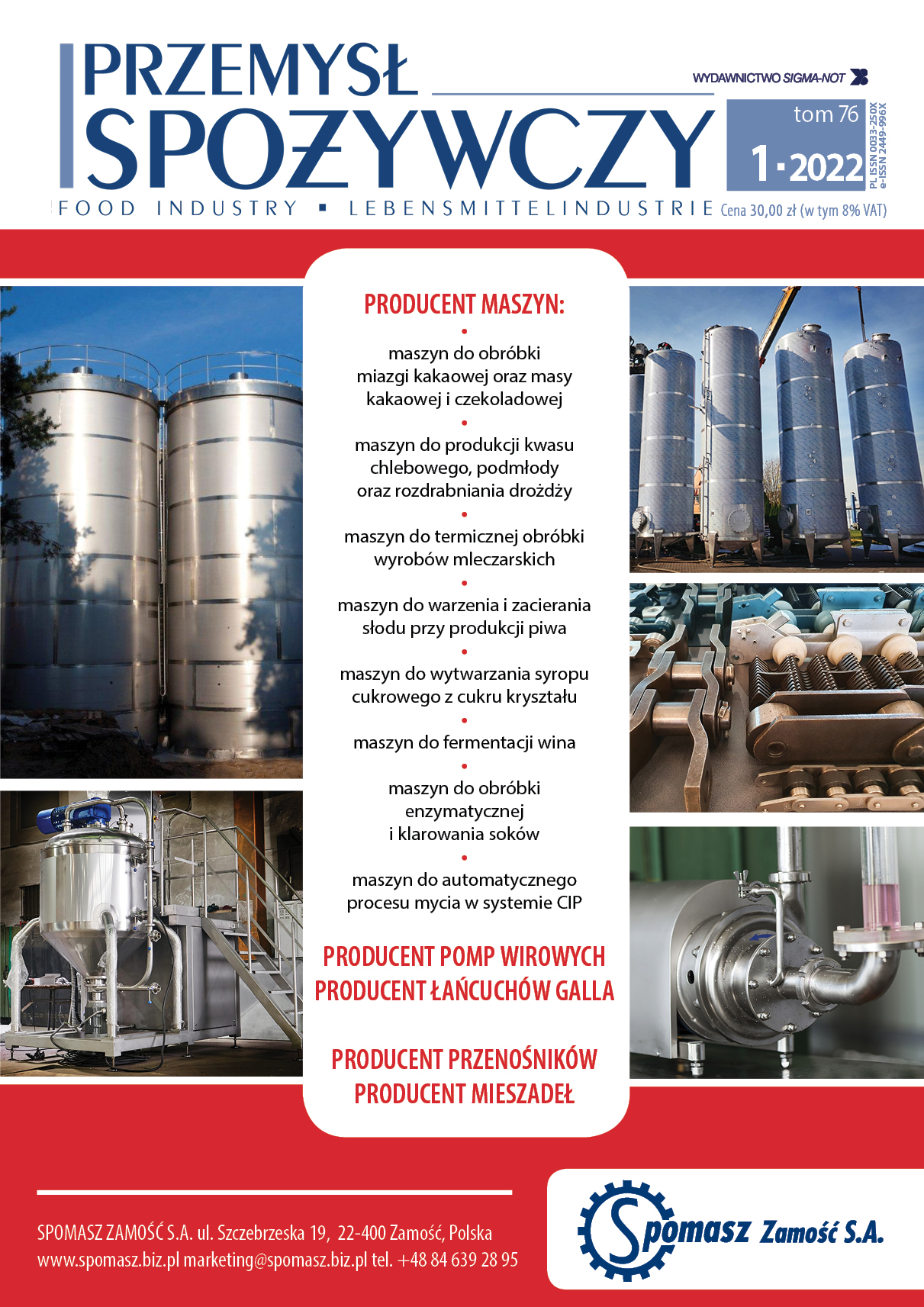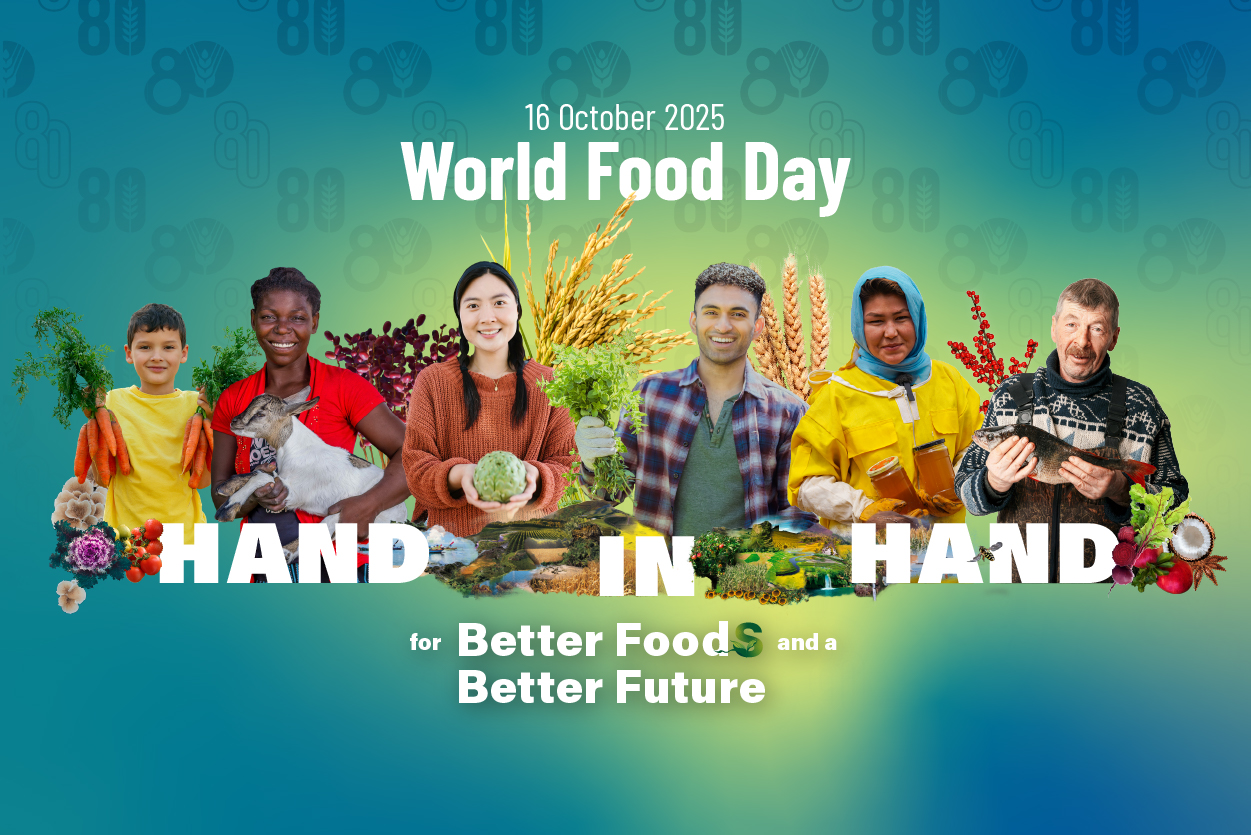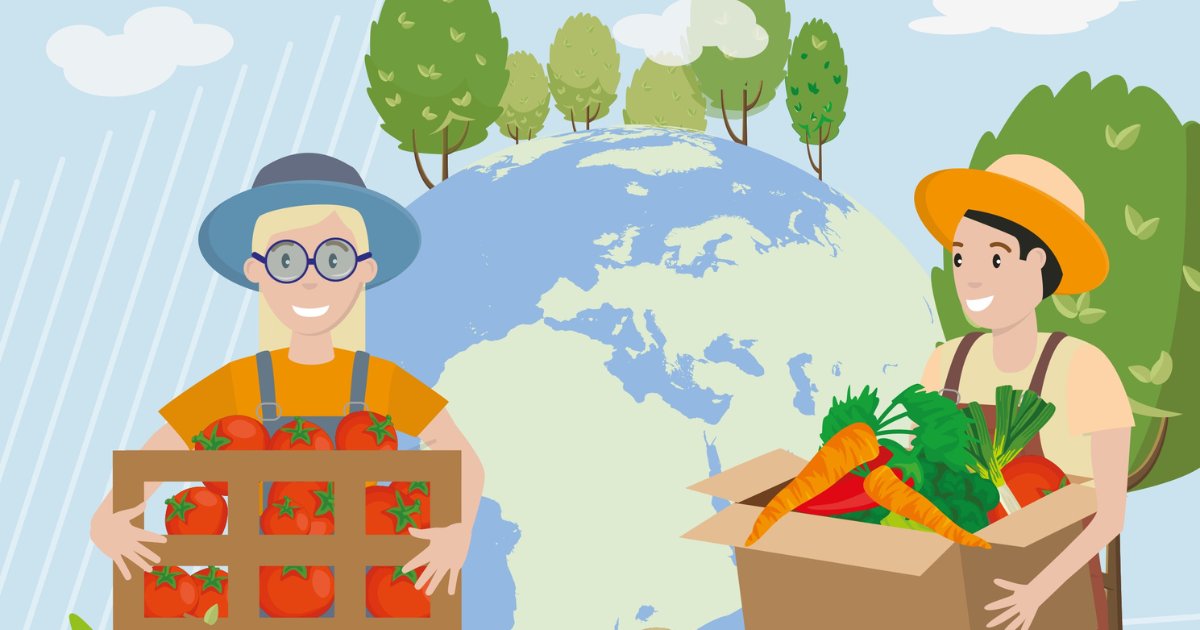ECONOMY
- Food Market and Industry In 2021 – Part I (DOI10.15199/65.2022.1.1)
Iwona Szczepaniak, Łukasz Ambroziak, Jadwiga Drożdż, Robert Mroczek 2
Another year, the SARS-CoV-2 virus spreads around the world. Everyone is feeling the effects of the COVID-19 pandemic caused by this virus. The aim of the article is to assess the situation of the food industry and agri-food trade in Poland in 2021 during the overall economic crisis caused by the pandemic. The first part of the study presents some production and financial data for several months of the year, in particular concerning production, prices, financial condition and investment activity. The analysis shows that the food processing sector in Poland copes quite well with the difficulties that result from functioning in a pandemic reality. However, maintaining good production and financial results as well as high export dynamics will be more and more difficult. Changing external conditions (increase in production costs, taxes, etc.) pose a great challenge for food companies and require a number of adaptation measures.
KEY WORDS: food industry, production, economic and finance results, prices, investments, COVID-19 pandemic
- Can World Hunger Be Eliminated? (DOI10.15199/65.2022.1.2)
Bohdan Achrem-Achremowicz 9
The problem of hunger has been affecting the people of many poor countries for many years. Of the 7.7 billion people in the world, 821 million people (10.9%) go hungry. The ongoing COVID-19 epidemic and the expected population growth to around 9 billion by 2050 raise concerns about an escalation of this threat. In the latest report (9/11/21), FAO is once again trying to ensure food security for millions of people living mainly in the south of the globe. Further attempts are being made to increase food production, especially in the most vulnerable countries. These include the countries of sub-Saharan Africa where there are twice as many malnourished people as the world average. For example, the assumptions of the Ugandan’s recovery program were discussed. The assumptions and costs of increasing the production of basic food products were analysed in detail.
KEY WORDS: the problem of hunger, FAO activities, malnutrition in Poland, Uganda, economic assessment
TECHNICS-TECHNOLOGY
- Radiation Preservation and Identification of Food Irradiation (DOI10.15199/65.2022.1.3)
Wojciech Głuszewski, Grzegorz Guzik 14
Minor chemical changes caused by the action of ionizing radiation are sufficient to combat pathogens and insects in the preservation processes of: herbs, herbal spices, dried mush-rooms, dietary supplements and food. It is an effective way to prevent food poisoning caused by the consumption of biologically contaminated food. The uniqueness of radiation technol-ogies lies in the fact that maintenance operations can be carried out in: a short time, at any temperature, the entire volume of the material, tight unit packaging and collective carton. Modifications of product properties in most cases are not observed by sensory methods. Irra-diation controls considered to be microbiologically and toxicologically safe food are only intended to enforce the obligation to inform consumers about the form of preservation. It is worth emphasizing that radiation-cured products do not become radioactive. Therefore, radi-ation should not be confused with radioactivity.
KEY WORDS: ionizing radiation, radiolysis, food preservation, identification of food irradiation
FOOD-FEEDING
- Industrial Hemp Seeds in The Prevention of Diet-Related Diseases (DOI10.15199/65.2022.1.4)
Adam Jurgoński, Paulina Opyd 19
Bad eating habits are one of the keys causes that increase the risk of chronic diseases, such as obesity and cardiovascular disease, collectively defined as diet-related diseases. One of the ways to preventing these diseases is to increase the contribution of plant-derived foods in the daily diet, including healthy compounds such as polyunsaturated fatty acids (PUFA). Indus-trial hemp seeds are PUFA-rich oilseeds, the health-promoting potential of which is currently more often studied. in addition to high content of oil rich in n-3 family α-linolenic acid, among others, hemp seeds are also rich in protein, fiber and bio-active peptides and lignan-amides. The authors’ own research indicates that dietary supplementation with hemp seeds, including their defatted form, available as the by-product of vegetable oil processing, can attenuate metabolic disorders specific to obesity and associated diet-related diseases.
KEY WORDS: oilseeds, hemp seeds, defatted seeds, PUFA, obesity, bio-active compounds
- Consumer Opinions in The Light of The Benefits and Challenges Related to The Market De-velopment Of 3D Food Printing Technology (DOI10.15199/65.2022.1.5)
Katarzyna Klockiewicz, Urszula Samotyja 22
Despite the great potential of 3D printing for food production, it is not very widespread. The aim of the study was to evaluate the knowledge of food 3D printing technology by individual consumers and to recognize its perception. The survey was conducted among 406 individual consumers, most of whom were under 40 years old. Almost 60% of the respondents had not ever heard of the possibility of producing food with the use of additive technology. Consum-ers opinions on food obtained by 3D printing vary from enthusiasm and willingness to exper-iment with new technology, to extreme rejection and concerns about its insecurity and insuf-ficient sensory attractiveness of printed foods. Promoting the benefits of using 3D printing to obtain food products should positively affect the consumer acceptance of the discussed tech-nology.
KEY WORDS: 3D printing, innovations, consumer, food design, sustainable food systems
LOGISTIC-PACKAGING
- Contemporary Trends in The Packaging Market (DOI10.15199/65.2022.1.6)
Izabela Gajlewicz 27
The global food packaging market reached USD 311.4 billion in 2020. Packaging is a very important element of the offered product, which allows to create a brand image. Food pack-aging plays a key role in storing and transporting food items to the desired location without affecting taste and quality. It protects the contents from moisture and toxins, prevents spill-age and damage to products, and helps to maintain their shape and quality. The packaging market is constantly evolving in all its dimensions: there are new machines and materials for their production, new designs, and a gradual expansion of intelligent packaging, which in its functions go beyond the typical tasks of product protection. The dynamic development of the packaging market has been observed for many years. The industry, by offering high-quality products, has become an indispensable element influencing the sale of the products packed in them.
KEY WORDS: packaging, market, trends




